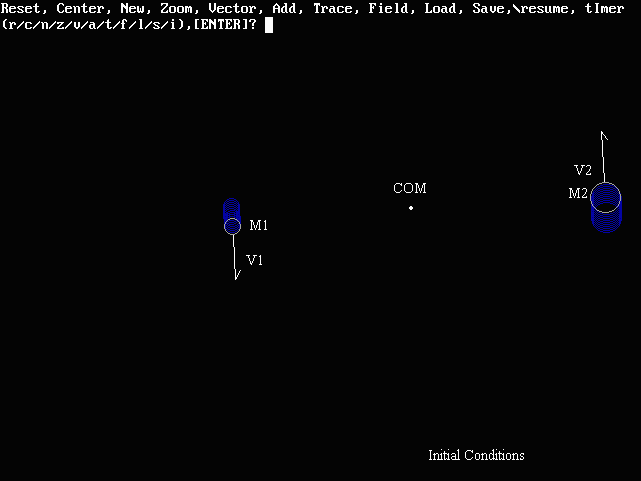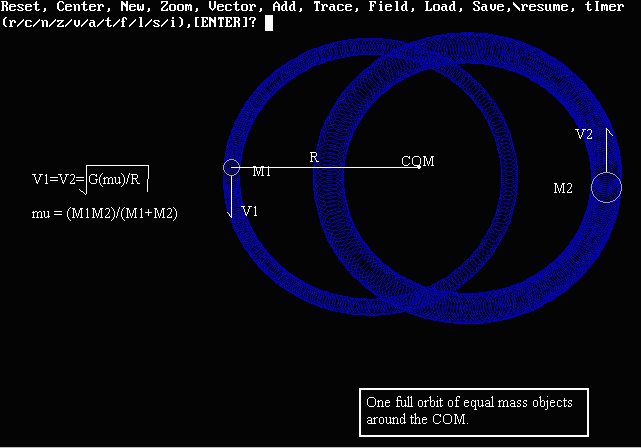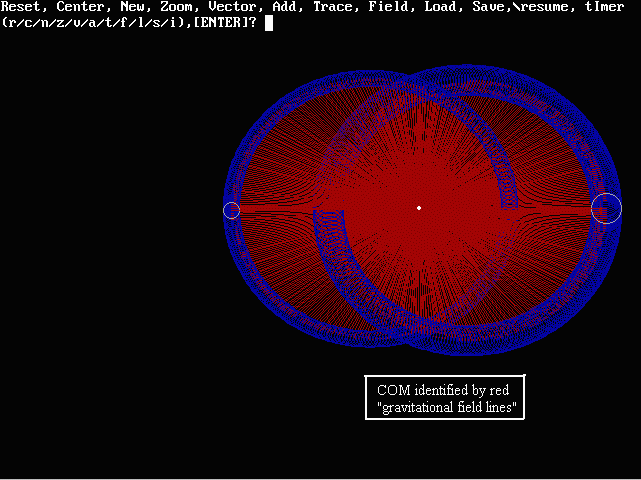mu = m1m2/(m1+m2)
v(circular)=(G(mu)/R)1/2. Such a situation looks like this:

In this particular example, m1=m2=1.1994e14 kg, and v1=v2=2.82843 m/s given by the formula above. In general, the center of mass is given by 1/M(SUM)mr, where M is the sum of the masses. The setup leads to interesting and asthetically pleasing results:

And eventually to mutual closed orbits:

In the simulation it is easier to see, but it is possible to detect here, that the masses are moving faster on the insides of their orbits and slower on the outsides, in effect with elliptical velocities in virtually circular orbits!
The center of mass can be seen within the software by turning on something I've named "gravitational field lines," really just a line drawn between the two masses. It works to find the c.o.m. with two bodies because of Newton's 2nd law - dp/dt is always conserved, so that massive objects move each other in a conservative way.

Where the red lines cross indicates, in this example at least, the location of the center of mass.